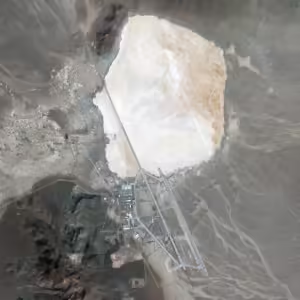Area 51, nestled deep within the Nevada desert, has been a lightning rod for speculation, secrecy, and conspiracy theories for decades. From the late-night talk of UFOs to secret government projects, it has ignited imaginations worldwide. But what is the real story behind this enigmatic military base? This article aims to peel back the layers of myth and mystery, taking you on a journey from its classified origins to its place in pop culture.
Introduction
Area 51, officially known as the Nevada Test and Training Range, has long been shrouded in secrecy and intrigue. Located in the arid expanse of Nevada’s desert near Groom Lake, it has become synonymous with clandestine government operations, high-tech military development, and the ever-alluring mystery of UFOs and extra-terrestrial life. But while conspiracy theories swirl around the base, the true history of Area 51 is a compelling story of Cold War politics, cutting-edge aerospace technology, and the desire for strategic dominance.
In this extensive exploration, we will delve into the origins of Area 51, examine its role in the development of advanced military aircraft, and dissect the rumours and legends that have made it a focal point of alien lore. From the hush-hush beginnings to its eventual declassification in the 21st century, we will uncover both the confirmed facts and the lingering mysteries that make Area 51 an enduring topic of fascination.
- The Origins of Area 51
The Creation of Area 51
Area 51’s origins date back to the height of the Cold War when the U.S. government was determined to gain the upper hand in aerial reconnaissance against the Soviet Union. In 1955, the CIA needed a remote and secure location to test the U-2 spy plane, which was designed to fly at altitudes above 70,000 feet—higher than Soviet radar and anti-aircraft defences could reach at the time. The site chosen for this top-secret project was a dry lake bed known as Groom Lake in Nevada, deep within the U.S. Air Force’s Nellis Range Complex.
The Groom Lake location was ideal due to its remoteness, ensuring that the testing of sensitive technologies would not be observed by the general public or foreign adversaries. Furthermore, it was shielded from the press, allowing the CIA and the U.S. military to carry out classified operations with minimal scrutiny.
Groom Lake: A Remote Location with a Purpose
Groom Lake’s isolation wasn’t accidental. This desolate, sun-scorched flatland was perfect for testing secret aircraft. Surrounded by mountains and far from civilian populations, the airspace around the lake was restricted, allowing for undisturbed flight testing. Over the years, Groom Lake became the epicentre of some of the U.S. military’s most ambitious projects.
The Cold War Context: U.S. Military Development
Area 51’s establishment coincided with an era of heightened geopolitical tension between the U.S. and the Soviet Union. The Cold War saw both superpowers competing not just in space exploration but also in military technology. The need for superior intelligence gathering led to the development of spy planes capable of gathering crucial data from high altitudes.
- Area 51 and the Development of Secret Military Technology
Project OXCART and the A-12 Spy Plane
One of the most significant projects carried out at Area 51 was Project OXCART, which focused on the development of the A-12 spy plane. This aircraft was designed to be a successor to the U-2, boasting even greater speed and stealth capabilities. The A-12 could fly at speeds over Mach 3 (three times the speed of sound) and at altitudes above 85,000 feet, making it nearly invulnerable to enemy defences.
The secrecy surrounding the A-12 was extreme. Workers at Area 51 were sworn to the highest levels of confidentiality, and public knowledge of the aircraft’s existence was tightly controlled. The technology developed during Project OXCART would later influence the creation of other ground-breaking aircraft, such as the SR-71 Blackbird.
The Role of Area 51 in Stealth Technology
Beyond reconnaissance, Area 51 played a pivotal role in developing stealth technology that would later be used in iconic aircraft such as the F-117 Nighthawk. The Nighthawk, first flown at Area 51 in the late 1970s, was designed to evade radar detection, making it an invaluable tool for U.S. military operations.
Stealth technology was revolutionary, and much of the research and development occurred under a veil of secrecy at Area 51. The remote location allowed engineers and scientists to experiment with cutting-edge materials and designs without fear of prying eyes.
The U-2 Spy Plane and Its Importance
The U-2 spy plane is perhaps one of the most well-known aircraft tested at Area 51. Its development and deployment were crucial during the Cold War, providing the U.S. with valuable intelligence on Soviet capabilities. The U-2’s high-altitude reconnaissance missions enabled the U.S. to monitor Soviet missile sites and track military movements, giving America an intelligence edge in an era of tense nuclear standoffs.
However, the U-2’s flights were not without risk. In 1960, U-2 pilot Francis Gary Powers was shot down while flying over Soviet airspace, leading to a diplomatic crisis. Despite this incident, the U-2 remained a critical tool for the U.S. military, with much of its testing and refinement carried out at Area 51.
Beyond Spy Planes: Drones and Advanced Aircraft Testing
Area 51 wasn’t just about manned aircraft. The base also became a testing ground for unmanned aerial vehicles (UAVs), or drones, long before drones became a staple of modern warfare. Advanced projects at the base explored the use of remotely piloted aircraft for reconnaissance and other purposes. Today, drones play a critical role in military strategy, and many of their early prototypes were developed at Area 51.
III. Secrecy and Security Around Area 51
Restricted Airspace and No-Fly Zones
One of the most telling aspects of Area 51’s secrecy is the strict no-fly zone established around the base. Airspace above Area 51 is heavily restricted, with even military personnel and pilots forbidden from flying over the base without proper clearance. The area, designated as “R-4808N,” is colloquially known as the “Box” among pilots, and entering this airspace without permission can result in severe consequences.
Heavy Surveillance and Security Measures
The perimeter of Area 51 is tightly controlled, with surveillance measures that include motion sensors, cameras, and regular patrols by security personnel, often referred to as “camo dudes.” These guards operate under a mandate to keep trespassers far from the base’s boundaries. Signs around the base warn that the use of deadly force is authorized to protect the installation, although no confirmed instances of this happening have been documented.
Government Denials and the Fuelling of Speculation
For decades, the U.S. government refused to acknowledge Area 51’s existence, despite the base being visible in satellite images and its mention in various official documents. This secrecy only fuelled speculation about what might be going on at the facility. The government’s silence on the matter led many to believe that the activities at Area 51 were far more extraordinary than simple military testing, giving rise to numerous conspiracy theories involving UFOs and alien technology.
- UFOs, Extra-terrestrial Life, and the Birth of Conspiracy Theories
The Roswell Incident and its Influence
One of the most significant events contributing to Area 51’s connection to UFO lore is the infamous Roswell incident of 1947. A mysterious object crashed on a ranch near Roswell, New Mexico, and initial reports from the U.S. military described it as a “flying disc.” The military later retracted this statement, explaining that it was actually a weather balloon. However, this retraction did little to quell rumours of a cover-up, and Roswell soon became a focal point for UFO enthusiasts.
Although the Roswell incident occurred in New Mexico, it contributed to the association of UFOs with secret government facilities like Area 51, where, according to rumours, extra-terrestrial technology was being reverse-engineered.
The Popularization of UFO Sightings
In the years following Roswell, UFO sightings became a global phenomenon. Many of these sightings were linked, either directly or indirectly, to the activities at Area 51. The secretive nature of the base made it a prime target for speculation, and reports of strange lights and unidentified flying objects in the skies around Area 51 only fuelled public imagination.
Claims of Alien Bodies and Reverse Engineering
One of the most persistent conspiracy theories surrounding Area 51 is that the U.S. government has been storing alien bodies and technology recovered from crashed UFOs, including the Roswell incident, at the base. According to some accounts, scientists at Area 51 have been working for decades to reverse-engineer extra-terrestrial technology to create advanced military weapons and aircraft.
While there is no credible evidence to support these claims, they have persisted in UFO circles for decades, thanks in part to the testimony of individuals like Bob Lazar.
The Role of Area 51 in Pop Culture: Movies, TV Shows, and Games
Area 51’s place in pop culture is hard to overstate. From blockbuster films like Independence Day to popular TV shows such as The X-Files, the base has become a central part of the mythology surrounding UFOs and government cover-ups. Area 51 has been portrayed as the hub of alien experimentation, secret government projects, and mysterious phenomena. This portrayal has helped keep the base in the public’s imagination, ensuring that Area 51 remains synonymous with high-level secrecy and extra-terrestrial intrigue.
- The Declassification of Area 51
The CIA’s 2013 Acknowledgment
In 2013, the CIA officially acknowledged the existence of Area 51 for the first time in a series of declassified documents. These documents revealed details about the U-2 spy plane and other Cold War-era projects, confirming that the base had been used for testing advanced military technology. However, the documents did not mention UFOs or alien technology, much to the disappointment of conspiracy theorists.
Documents and Information Released
The declassified documents provided valuable insights into the activities at Area 51 during the 1950s and 1960s. They confirmed that the U-2 spy plane, A-12 OXCART, and other classified aircraft had been tested at the facility. These revelations helped to dispel some of the more outlandish theories about the base, while simultaneously raising new questions about what might still be classified.
What Remains Classified and Why
Despite the release of some information, much about Area 51 remains classified. This includes details about ongoing projects, advanced technologies being developed, and the true scope of the base’s activities. The U.S. government maintains that this level of secrecy is necessary for national security, but it also ensures that speculation about the base’s true purpose will continue.
- The Modern Purpose of Area 51
Testing and Development of Advanced Military Technology
Today, Area 51 continues to be a hub for testing cutting-edge military technology. While much of what happens at the base remains classified, it’s known that the base plays a critical role in the development of next-generation aircraft, weapons systems, and surveillance technologies.
Some reports suggest that Area 51 is used to test experimental drones, hypersonic aircraft, and other advanced technologies that could shape the future of warfare. The secrecy surrounding these projects is necessary to prevent foreign adversaries from gaining insight into U.S. military capabilities.
Technological Innovation in Warfare
One of Area 51’s primary purposes is to ensure that the U.S. military maintains a technological edge over its adversaries. The base serves as a proving ground for new technologies that could revolutionize aerial combat and surveillance. Whether it’s through the development of stealth aircraft, high-speed drones, or other innovations, Area 51 is at the forefront of modern military innovation.
Ongoing Secrecy and Speculation
Despite occasional glimpses into what happens at Area 51, the base remains as secretive as ever. Speculation about its true purpose continues, fuelled by the lack of transparency and the occasional leak of tantalizing details. This ongoing secrecy ensures that Area 51 will remain a source of intrigue and mystery for years to come.
VII. The Human Factor: Workers and Whistle-blowers
Bob Lazar: A Controversial Figure
One of the most famous whistle-blowers associated with Area 51 is Bob Lazar, who came forward in 1989 claiming to have worked at a facility near Area 51 known as S-4. According to Lazar, he was involved in reverse-engineering alien spacecraft, and he provided detailed descriptions of the craft’s propulsion systems. Lazar’s claims have been met with scepticism, and many have questioned his credibility. Nevertheless, his story has become a central part of the Area 51 mythos.
Testimonies from Former Area 51 Employees
Over the years, several individuals claiming to have worked at Area 51 have come forward with their stories. While most of these testimonies focus on the development of advanced aircraft, some have hinted at more mysterious activities, including the testing of unconventional technologies.
Health Risks from Classified Experiments?
In the late 1990s, a group of former Area 51 employees filed a lawsuit against the U.S. government, alleging that they had been exposed to hazardous materials during their time working at the base. The workers claimed that they had suffered serious health problems as a result of being exposed to toxic chemicals used in classified experiments. The case was ultimately dismissed due to national security concerns, but it raised important questions about the risks faced by those working at such a secretive facility.
VIII. Area 51 and its Place in American Culture
Alien Conspiracies and the American Imagination
Area 51 has become a symbol of the unknown, a place where the boundaries between science fiction and reality blur. It has inspired countless conspiracy theories, books, films, and television shows, all exploring the possibility that the government is hiding something extraordinary. Whether it’s aliens, advanced technology, or something else entirely, Area 51 continues to fuel the imagination of people around the world.
Area 51 as a Symbol of Government Secrecy
Beyond its association with extra-terrestrial life, Area 51 has come to represent the larger issue of government secrecy. For many, the base is a reminder that there are aspects of military and governmental operations that remain hidden from public view. This secrecy breeds suspicion and, in turn, feeds into the narrative that the government is hiding something significant.
The 2019 “Storm Area 51” Movement
In 2019, a viral internet event called “Storm Area 51” captured the public’s imagination. Initially conceived as a joke, the event proposed that people should gather to storm the gates of Area 51 and uncover its secrets. Although the event ultimately turned into a light-hearted festival rather than a mass invasion, it underscored the enduring fascination with the base and its mysteries.
- Conclusion
Area 51: Truth, Speculation, and the Future
Area 51 is a place where fact and fiction collide. On one hand, it has played a critical role in the development of some of the U.S. military’s most advanced technologies. On the other hand, its secrecy has given rise to a host of conspiracy theories, many of which persist to this day.
As technology continues to evolve and new information comes to light, the true purpose of Area 51 may eventually be revealed. But for now, it remains an enigmatic symbol of government secrecy and human curiosity.
Why Area 51 Will Continue to Captivate Minds
Area 51’s allure lies in its mystery. Whether it’s the promise of advanced technology or the tantalizing possibility of extra-terrestrial life, the base has a way of capturing the imagination. As long as the U.S. government continues to keep its activities at Area 51 under wraps, people will keep speculating, searching for answers, and dreaming of what might be hidden in the Nevada desert.








Leave a Reply